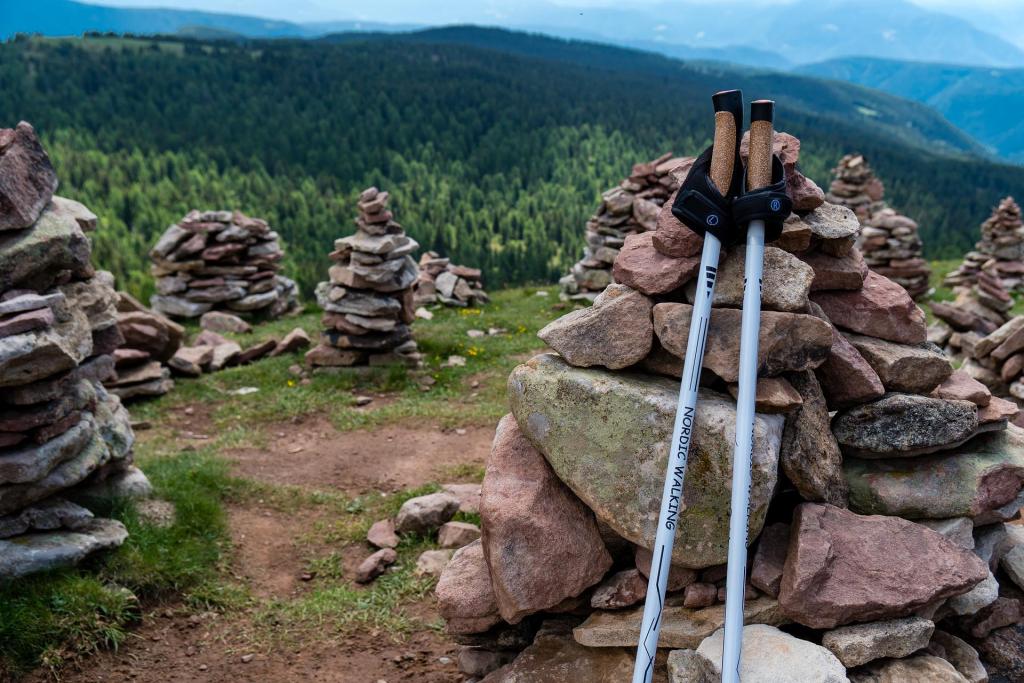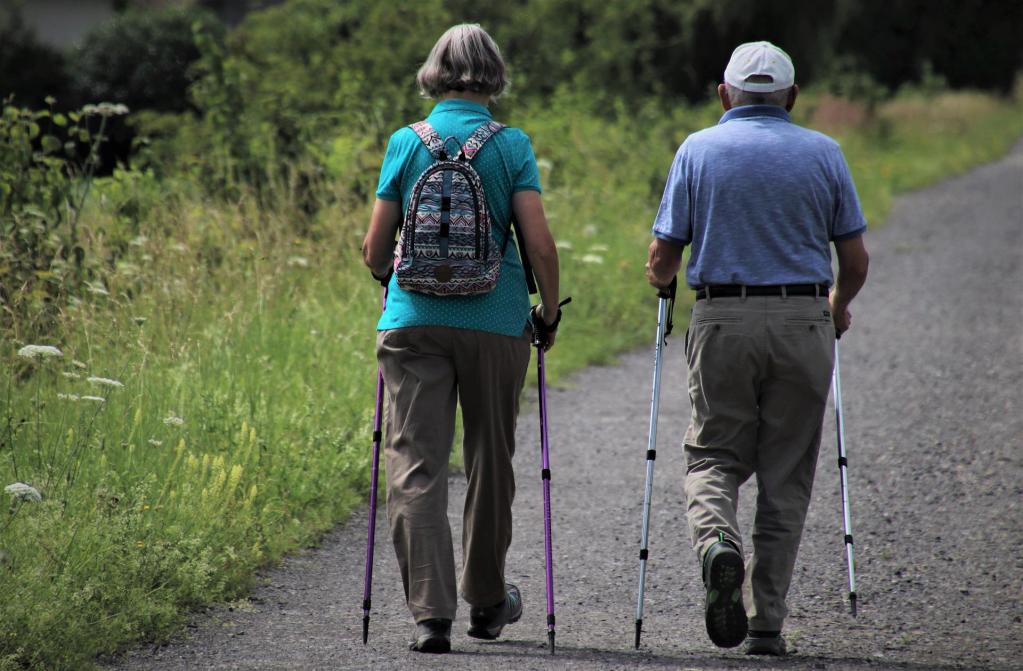
Nordic walking is a recreational activity that involves holding poles. Whilst you can use the poles for balance and grip, the emphasis is on the length of the correct step and alternating the work with your hands to include more muscles in your workout.
Nordic walking poles are not held vertically; they follow the movements of the body. The pole ends are not held in front of you but behind, almost like an extension of your arm. The poles serve as support and “push” you.
What that means is that nordic meaning is a useful walking workout and provides you with an alternative to brisk walking. If you’re looking for a sport that doesn’t require a lot of effort but still provides plenty of benefits, nordic walking is a good option.
Medical experts think so as well. As a matter of acting, heart studies have shown that Nordic walking is a better cardiovascular treatment than other forms of exercise.
Nordic walking helps with rhythmic breathing and cardio exercises and engages a large number of muscles yet is still considered light activity. For people suffering from heart problems, walking is a less stressful form of exercise for your body than say, for example, running and aerobics.
Nordic Walking Poles
At first glance, Nordic walking and trekking poles look the same. The difference is minimal, but it is important in order for the poles to serve the right purpose. When choosing poles, pay attention to the following details, so that they are used in the right way.
When it comes to grip – Nordic walking poles have a longer and thinner grip, more similar to ski poles, meaning one size fits most users. Poles are generally one-piece, although there are two-piece and three-piece poles that are easier to transport.

Nordic walking poles have a space for the thumb on the wristband itself (and thus the left and right wristbands) and it provides support when walking to perform the technique correctly and avoid the stick running away when catching in the forward phase. In contrast with trekking poles, the bracelet does not have space for the thumb.
At the top of the Nordic walking stick, there is rubber in the shape of a boot, which is used so that when training on concrete, or asphalt, they have better contact with the ground and achieve a better impression, and also to avoid the “rattling” of metal on the ground, since under that rubber (which is removable) has a metal part, which allows us to move on softer surfaces.
Pay attention to what activities you need poles for and based on that you will know which ones to buy.
Natural Environment
Unlike hiking, Nordic walking and brisk walking are done on a flat surface to avoid interfering with the natural walking process. Brisk walking is most often a city sport: in parks, on quays, even on treadmills. However, we can also meet pace walkers outside the city, in the natural environment.
On the other hand, Nordic walking is done on a flat surface, but also in natural surroundings, forest paths, and village paths. It can be performed independently or in a group (friends and acquaintances).
The recommendation for recreational Nordic walking is that the activity is carried out in the mountains, but it is also possible in any part of the city, town, or village.
It is Healthy To Walk
Medical experts agree that walking as a natural form of exercise is a great way to lose weight. While walking, most body fat is burned by engaging in large muscle groups. To lose weight, you need to exercise for at least 60 minutes (2-3 times a week), but it is enough to start with 30 minutes with a gradual increase.
You will not lose kilos like when you are on a diet but through the engagement of large muscle groups. Muscles naturally burn calories, because they are the fuel for their work. By engaging the upper part of the body in Nordic walking, caloric consumption is higher than in ordinary walking. It’s also a great workout for those who have joint issues such as arthritis.

Not only does Nordic walking increase strength, endurance, and muscle tone, but it is also an ideal workout for overweight people, due to increased calorie consumption while walking with sticks. In an average Nordic walking training that lasts 45 to 60 minutes, 400-800 calories are consumed. Normally, walking at the same speed burns 280 calories.
Due to the fact that sticks are used, the heart rate increases by 5-17 beats per minute during Nordic walking (for example, with normal walking it is 130 beats per minute, and with Nordic walking it is 147 beats per minute), so it is also excellent training for the body’s cardiovascular system.
Physical activity is only one component and is a great start for investing in yourself, and correcting your diet and regulating your sleep are also important. With these three components, the results are long-lasting, sustaining, and fantastic.
Endorphins – The Happiness Hormones
Nordic walking has incredible physical effects and while you are moving, even 90% of your muscles are active, the whole body is in tone and the consumption of calories is increased. In addition to these visible effects, this activity improves your health in other ways.
By lowering blood pressure, it protects the heart and reduces the risk of developing diabetes and high cholesterol. It is great for your bones because it stimulates the absorption of calcium. It’s outdoors, so due to increased breathing and sweating, you rid your body of toxins, and your brain gets a full amount of oxygen.
Fatigue, insomnia, and headaches slowly disappear. You will sleep, eat, breathe and feel better. The physical well-being and sense of freedom you get from walking is a significant boost to your mental health.
When you organise your schedule around Nordic walking training, you become more efficient in managing daily tasks and develop a calmer approach to the hustle and bustle that surrounds us. Enjoy Nordic walking and feel the satisfaction that this activity offers.



